We produce purebred Hampshire and Duroc boars and gilts throughout the year, but please make sure you let us know your requirements ahead of time to ensure we have suitable stock if you are planning on purchasing stock. Due to popular demand we are also breeding Hamroc gilts as of 2020. These have proven to be a popular cross for use as a female line particularly for outdoor, free range herds.
Both Duroc and Hampshire boars make exceptional terminal sires over any breed, particularly over F1 sows bred for the commercial industry. Our boars are bred and grown outdoors all year round, so will excell in any conditions regardless of where your farm is, whether indoor or outdoors.
Using a quality boar over your sows is one of the cheapest and quickest ways to improve production and reduce your costs.
By using one of our boars you will increase the growth rate of your market pigs, increase feed conversion rates, reduce backfat, decrease the number of non-viable pigs, and increase litter size as well as improving meat quality and carcass yield. This means more profit over less time.
Any pigs sent out from our farm as breeders to another are subject to a minimum of 3 weeks quarantine in our isolated quarantine area as part of our updated bio-security protocol. Any pickups will be from this area and not from the farm.
Please see below for specific information on each breed, and please don’t hesitate to contact us to discuss any questions you may have. Note that prices and availability are subject to change without notice, and this includes pigs held past agreed pick-up/delivery dates.
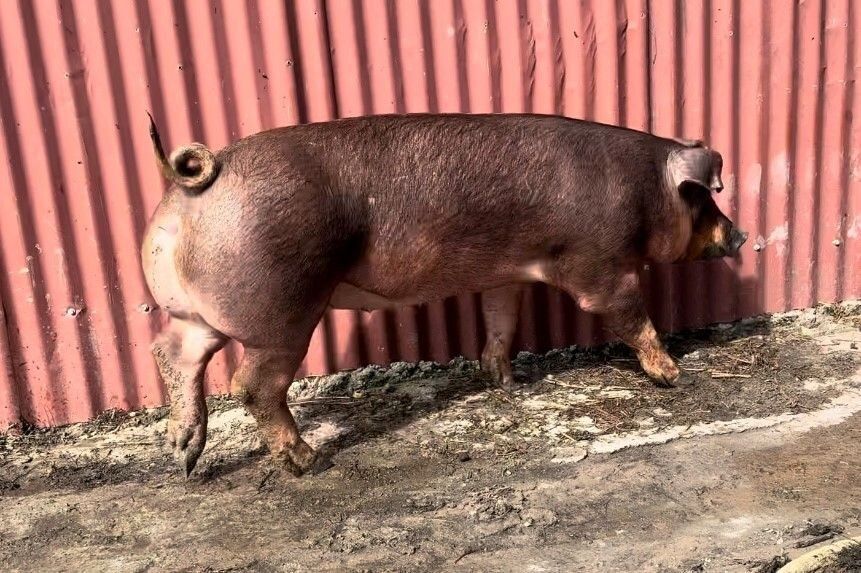

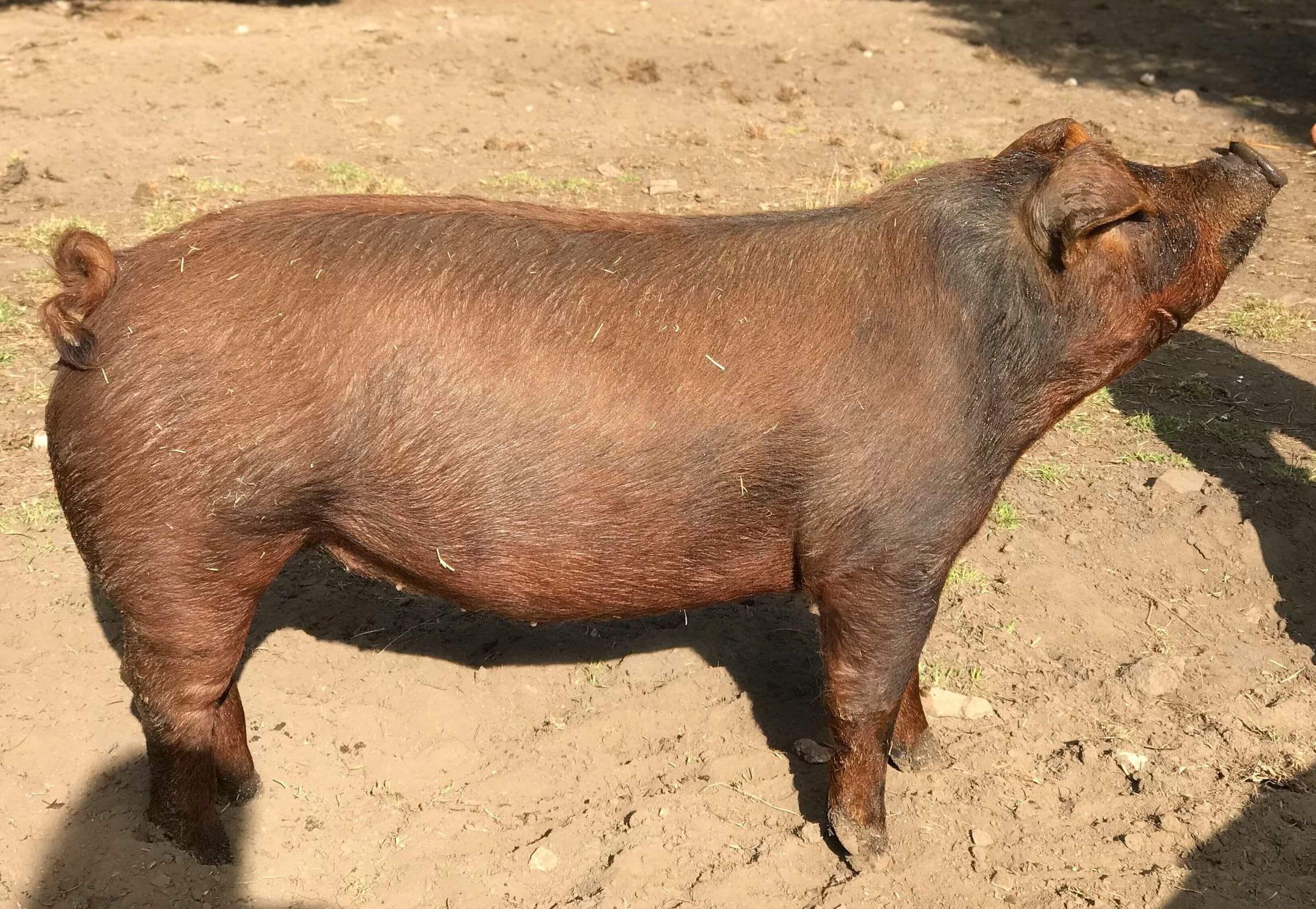
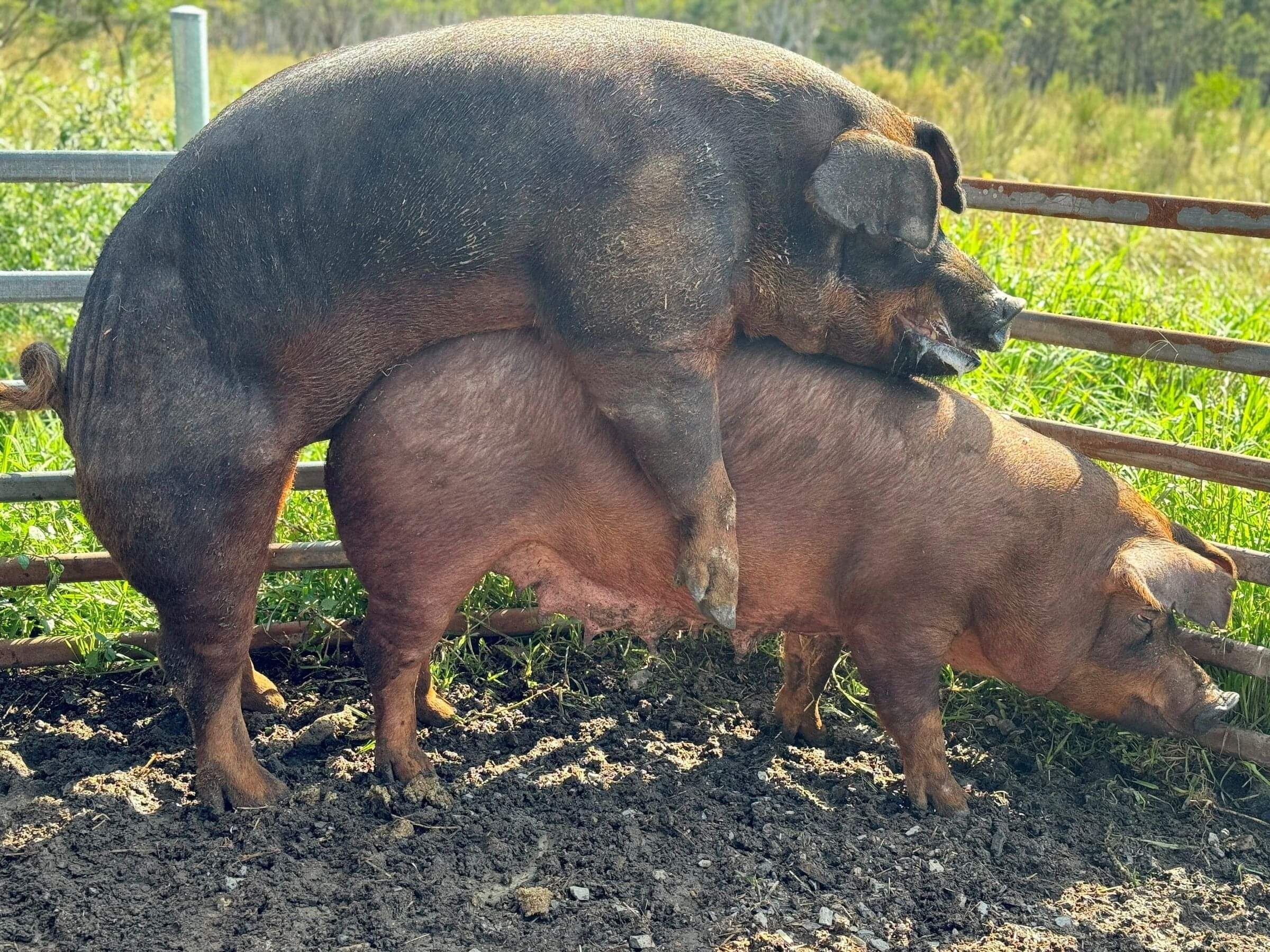

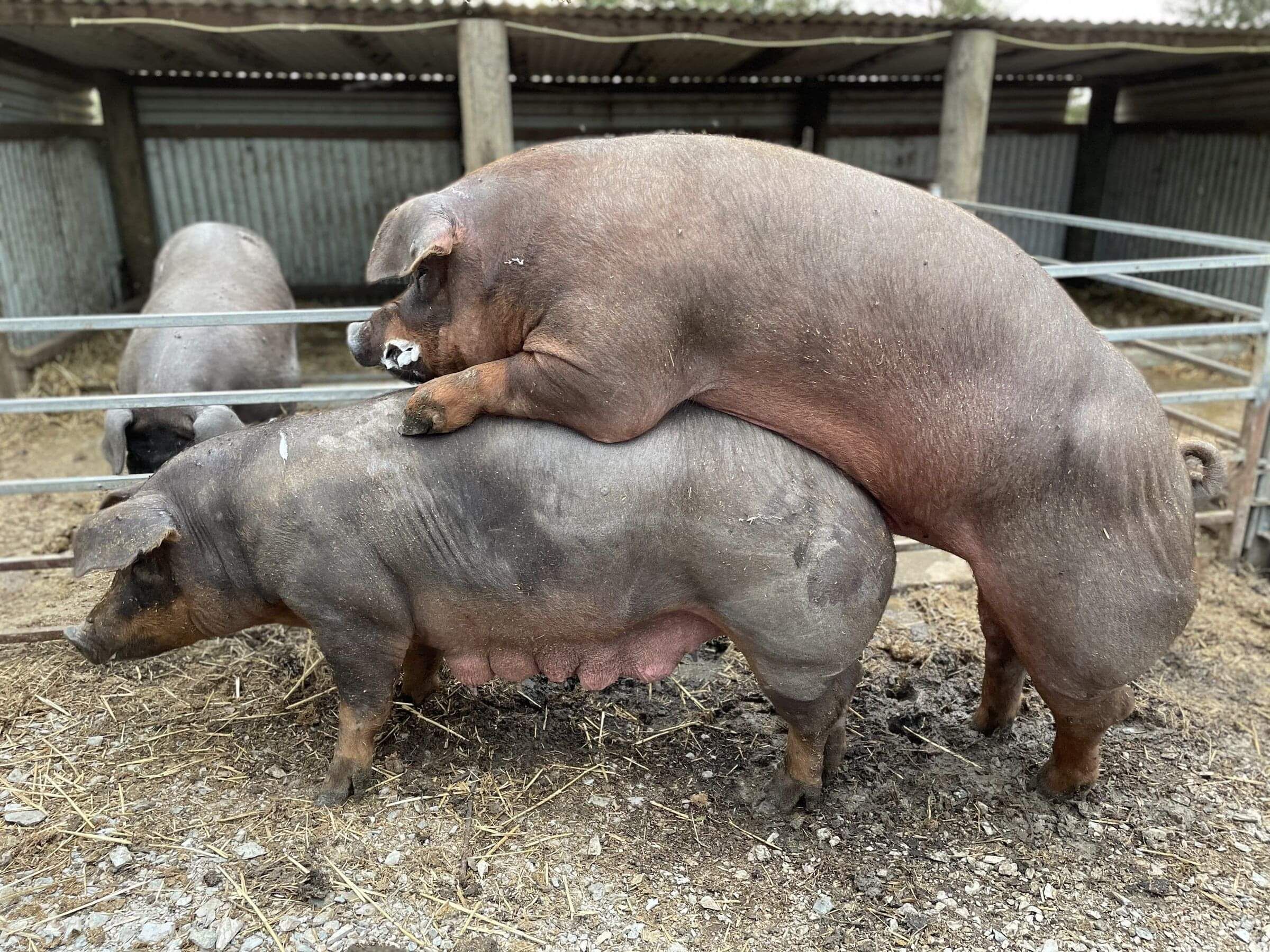
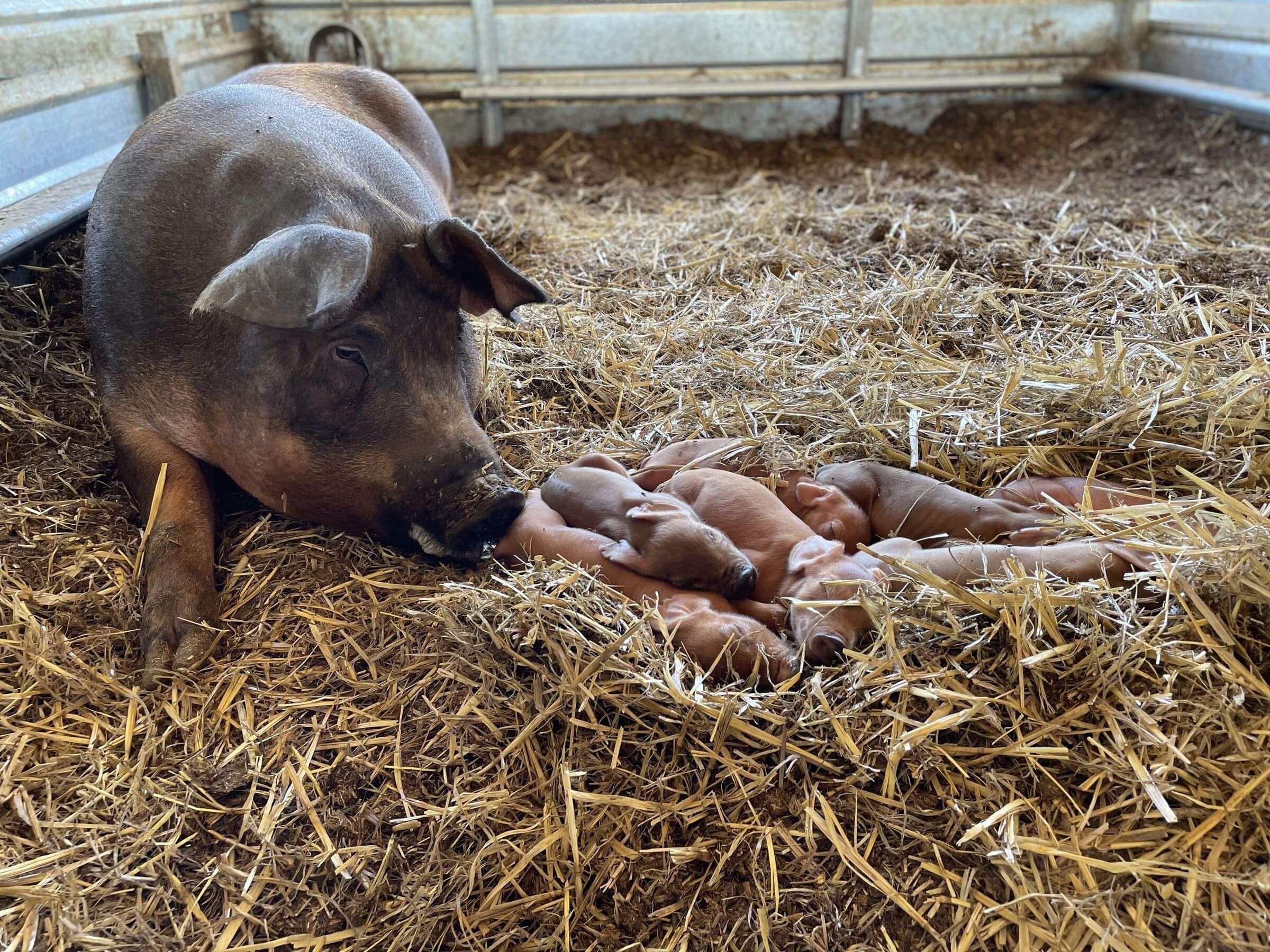

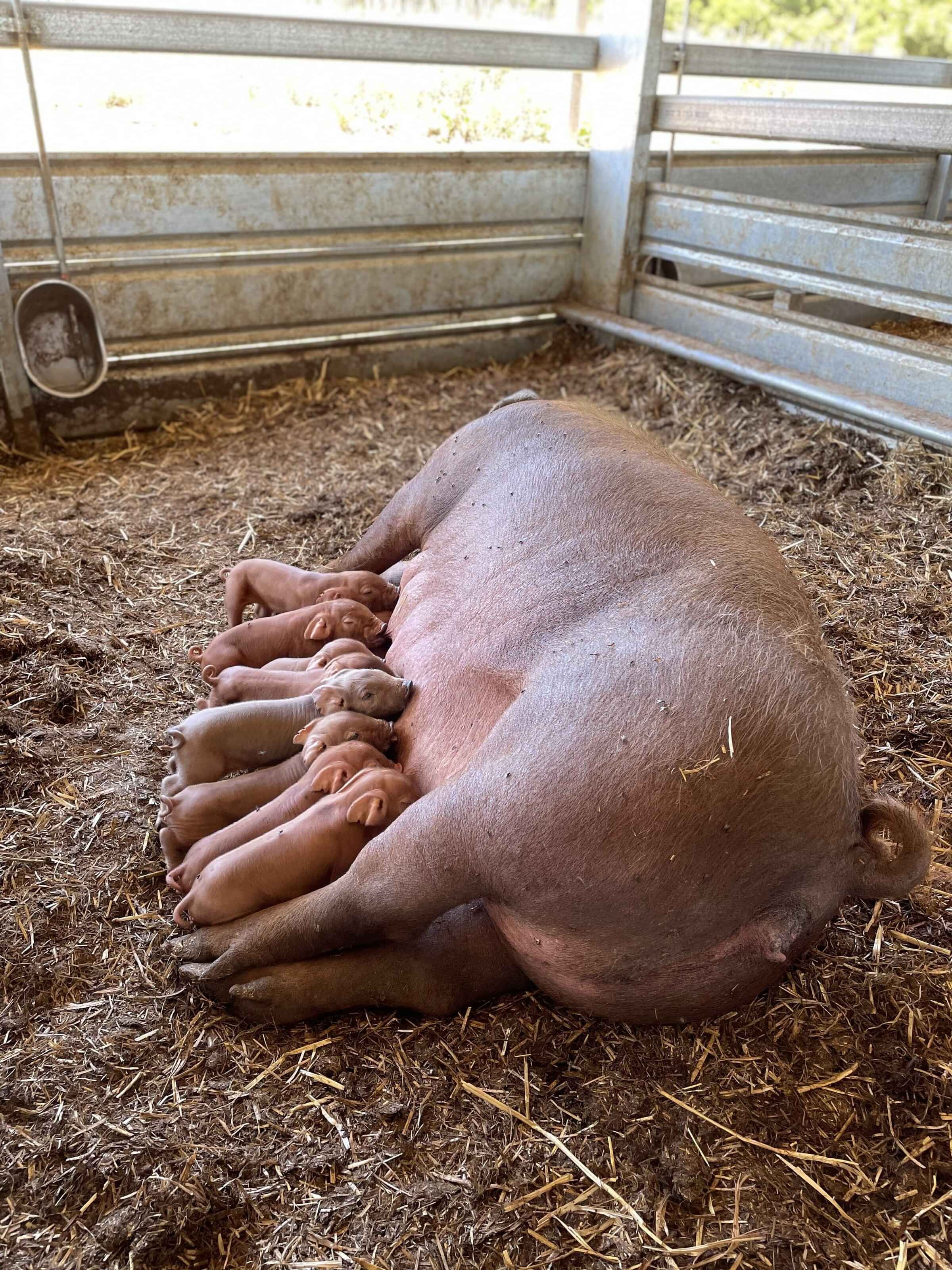
Durocs
The Duroc originated in the early 1820’s in America. It rapidly gained popularity throughout the 1800’s and became a popular choice because of its fertility, hardiness, docility, carcass quality and growth rate. These are the great qualities that these pigs still retain, and although they made leaps and bounds across America to become one of the most popular breeds there today, the same cannot be said for Australia.
Durocs were introduced into Australia for the first time in the early 1900’s where they enjoyed a brief popularity. This was fleeting and by the mid-1950’s they had become extinct with no new registrations. They were re-introduced in the 1980’s from Canadian and New Zealand bloodlines due to the need for a terminal sire breed and this time they survived.
Although they still remain popular as a terminal sire in both commercial piggeries and smaller outdoor farms, at present there are only a handful of breeders across Australia with Durocs. With more small farms supplying direct to customers, there has been somewhat of a resurgence in popularity with the breed although there are very few female lines left. It is imperative that these are preserved to avoid in-breeding and diversity problems in the future.
Appearance
They are red in colour and this helps them deal with the strong sun in summer. The colour varies from a lighter almost yellow to a dark red approaching mahogany. They are a large pig with a high, muscular loin, full hams, heavy bone and broken ears. Hair molts completely in summer and can be very coarse in winter, especially on boars. It is best to select finer haired breeding stock as their progeny will clean up better when processed. They are very hardy and tolerate cold equally as well as heat, and with proper selection are a good candidate for outdoor pig farming. Duroc pigs tend to have a reputation as aggressive pigs, we have not found this to be so. With selective breeding over the generations we have very docile lines of both boars and sows, and we produce a lot of pure Durocs from different bloodlines.
Breeding
When selecting gilts for breeding, it is important that they are not too lean and muscular, as gilts with these traits carry less fat and will not have as much milk during lactation, tend to dry up quite early and can have problems farrowing. For these reasons they are most commonly found in indoor production, but with proper husbandry, accommodation and care they can be successfully grown outdoors. We don't usually recommend anyone starting out in pigs to choose Durocs as a pure breed.
Both purebred and crossbred Durocs are very good for producing a heavy carcass with minimal fat, and tend to have a darker meat with intra-muscular marbling. This helps to keep the meat moist and flavoursome once cooked. Durocs are our sire of choice over any breed of sow and produce healthy, fast growing piglets well suited to heavy pork and bacon production.
One thing to consider if you are thinking of breeding pure Durocs is their size, the boars and sows get very big indeed with boars reaching up to 450 kg (and sometimes more) and sows up to around 350 - 400 kg. They can be very protective mothers, particularly for the first week, so care needs to be taken around new litters.
Specialized infrastructure is a must if you intend to breed Durocs with any success. While they do very well outdoors, sows often don’t perform well if simply left to farrow in a shelter in a paddock. The majority of our Duroc sows are farrowed indoors in deep bedded farrowing pens, which although do not have farrowing crates are specifically designed to avoid crushing.
Hampshires
History
Like the Duroc, Hampshires have their origins in America. They were originally imported into America from Hampshire in England in the early 1820’s, where they quickly gained popularity and a reputation for producing a well muscled, lean carcass. Because of this they were highly sought after by butchers and were known locally as the “thin rind” because they supposedly had much thinner skin than other breeds. They were developed over many years in America to become the magnificent modern breed that they are today.
Hampshire pigs were only introduced into Australia in the 80’s, with the re-introduction of the Durocs, again from Canadian and New Zealand bloodlines. Because of this late introduction and the limited numbers, they are now the most critically endangered breed of pig in Australia today, with only a handful of breeders maintaining pure bred herds. There are also very few boar and sow lines left.
Appearance
While they have very similar colouring to Wessex Saddleback pigs, the similarities end there. Hampshires are a leaner, muscular pig with a wide chest, muscular loin and erect ears.
Thye are somewhat of an allrounder breed, with the mothers being good milk producers and capable of rearing large litters, while the boars make very good terminal sires over other breeds. In the United States and Canada they are used extensively as a terminal sire and are very highly regarded for producing lean, fast growing pigs with good muscling.
As with Durocs, it is important to select gilts that carry more fat and have softer underlines as they can be too lean and will have difficulty producing enough milk to wean litters later.
They are one of the few breeds that will do just as well indoors as they will outdoors. This makes them a very versatile breed that is capable of adapting well to any environment and climate, and will maintain good growth in a free range setting, eco-shelter or intensive indoor farm.
Lately there has been a big increase in the popularity of Hampshires as a pure breed, predominantly from smaller producers with free range, outdoor farms. This is due to their sound mothering ability, hardiness, carcass yield, attractive appearance and their ability to adapt well to a variety of conditions.
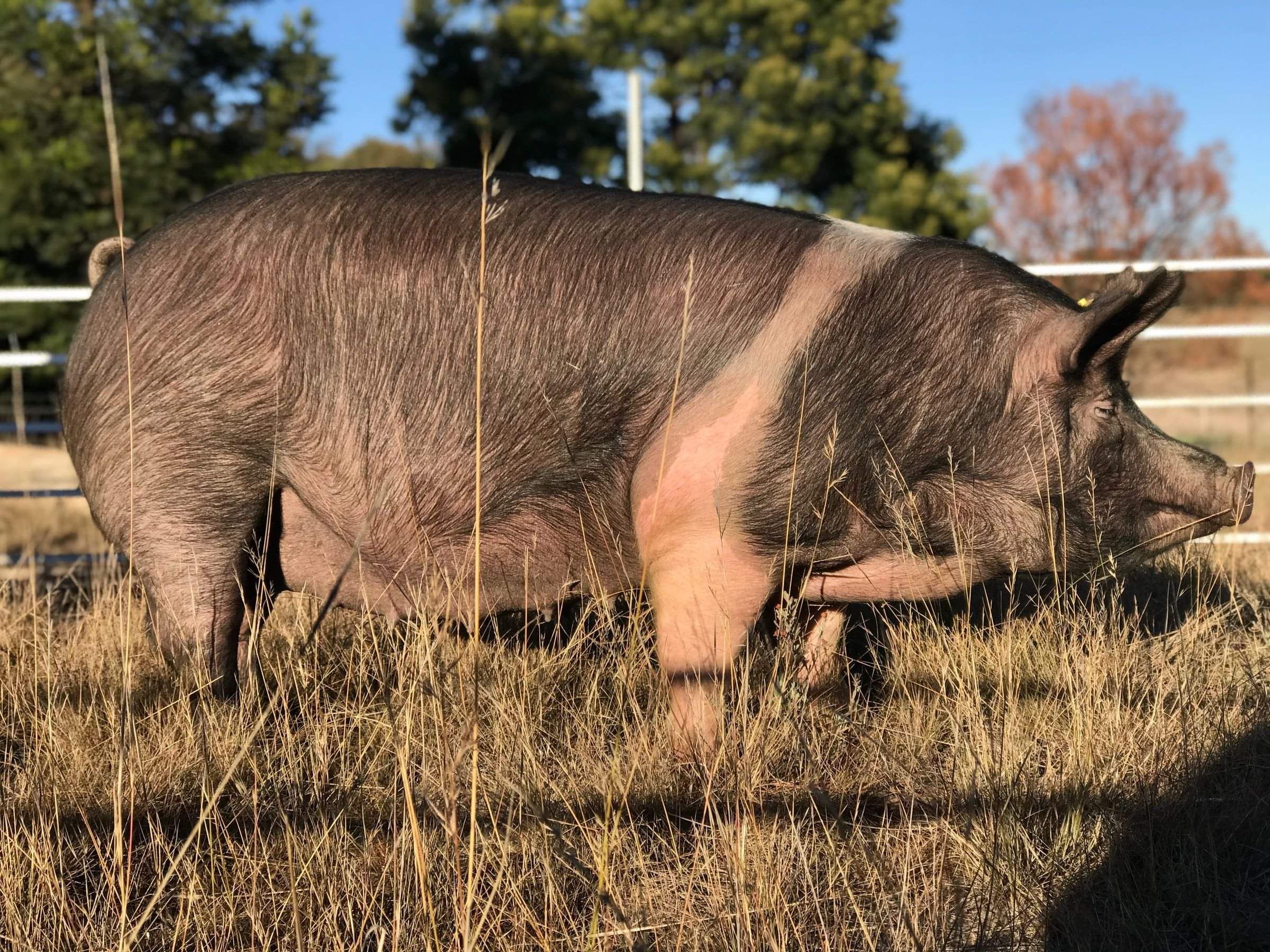




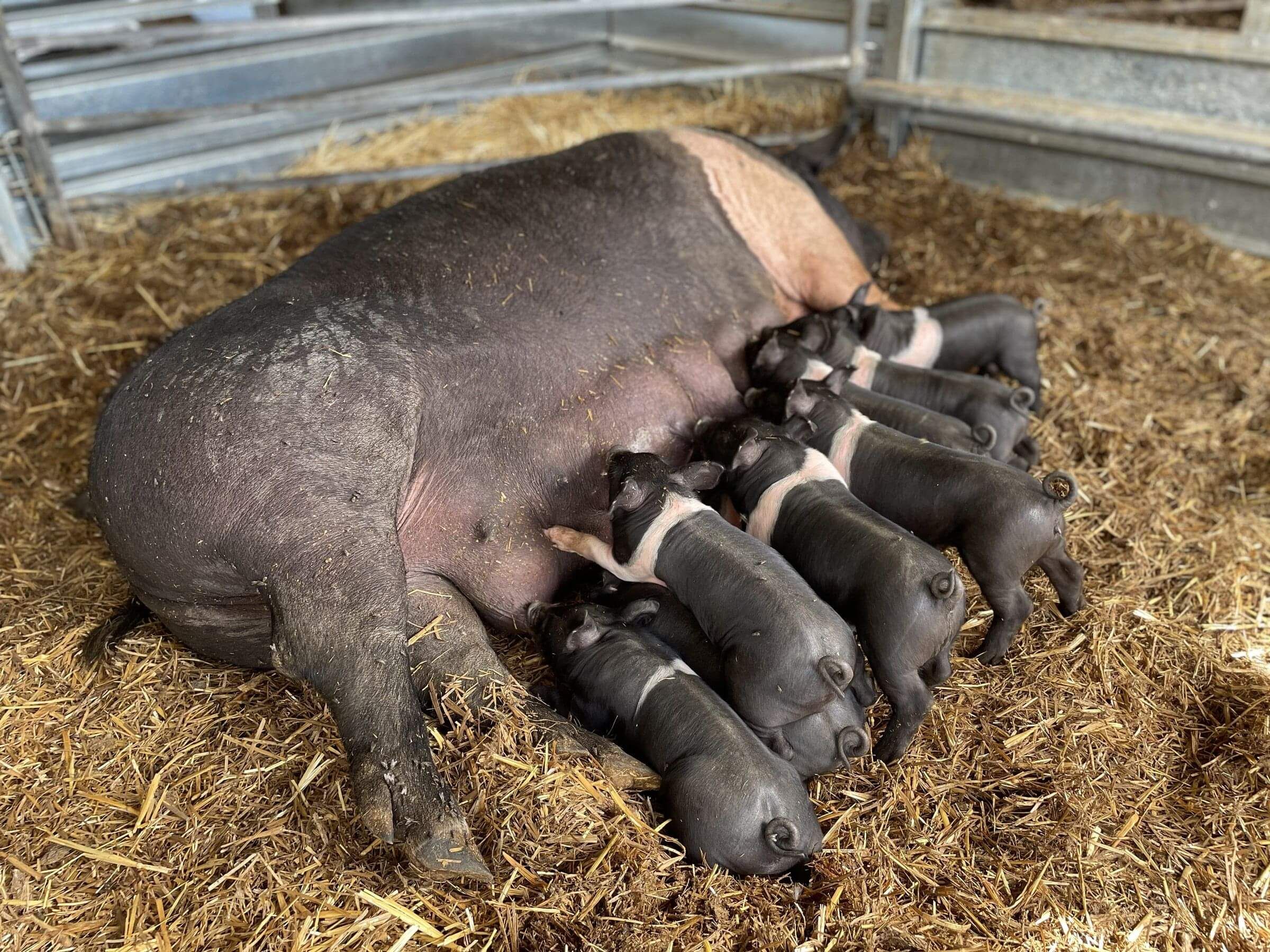
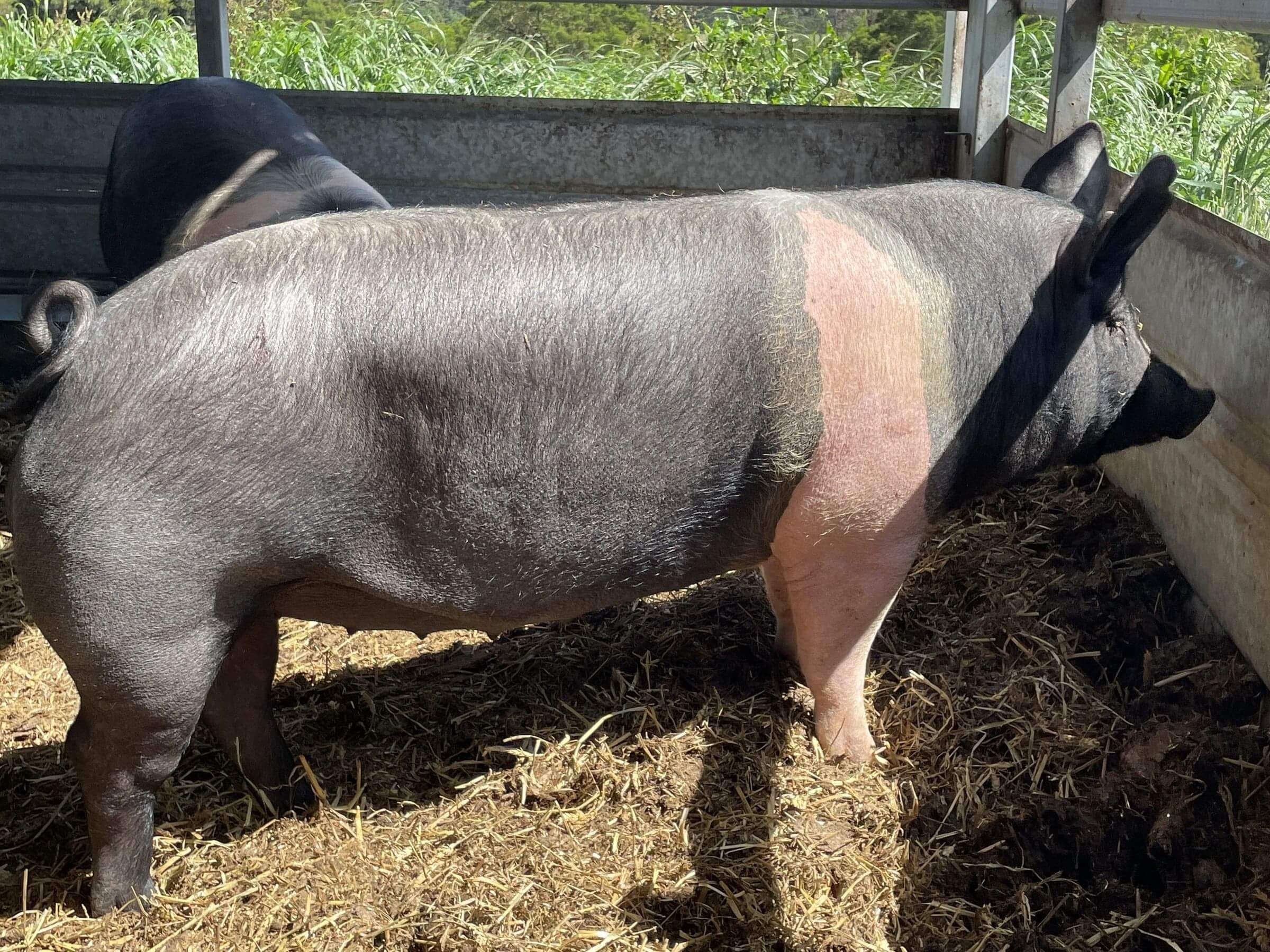
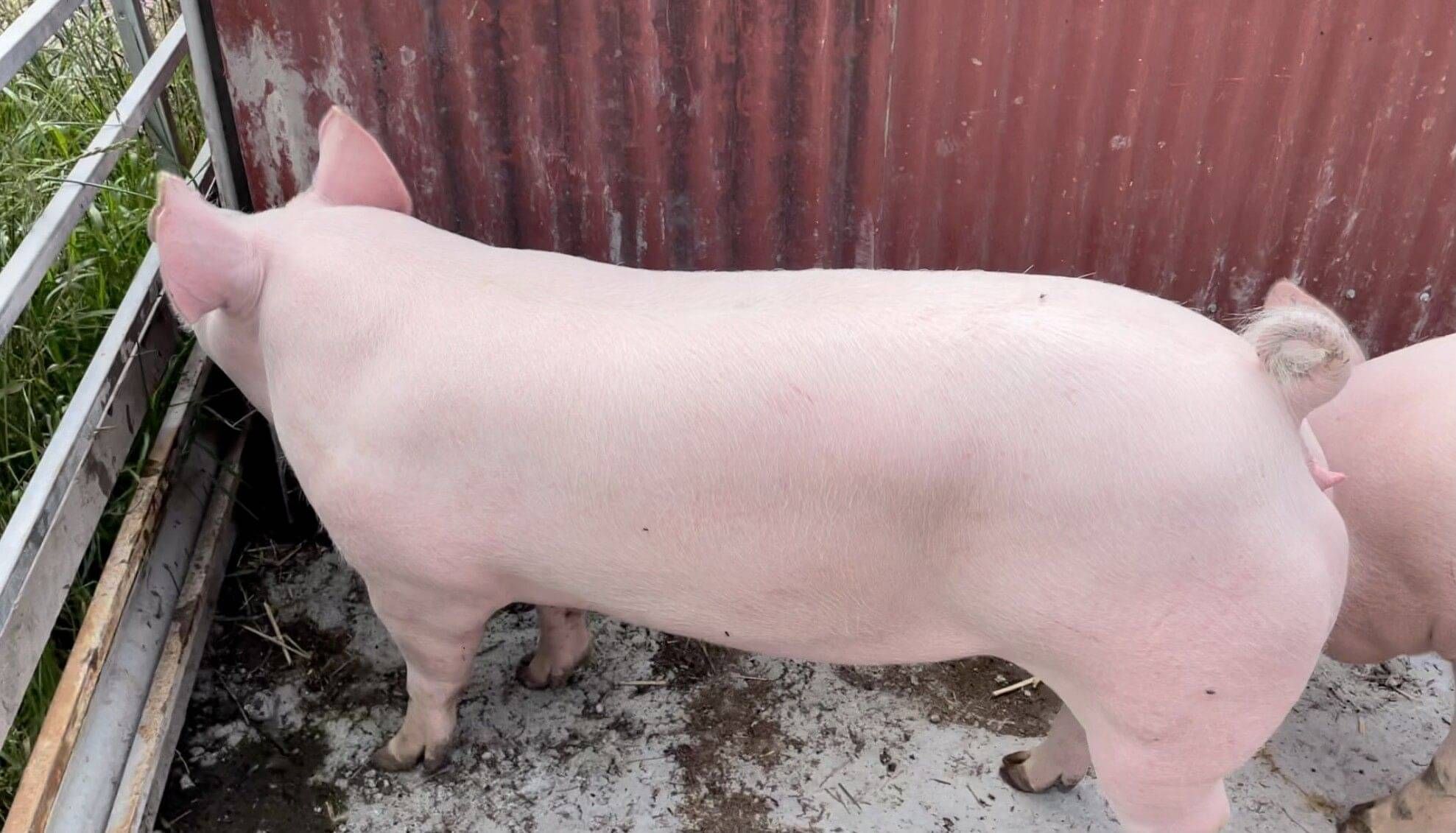
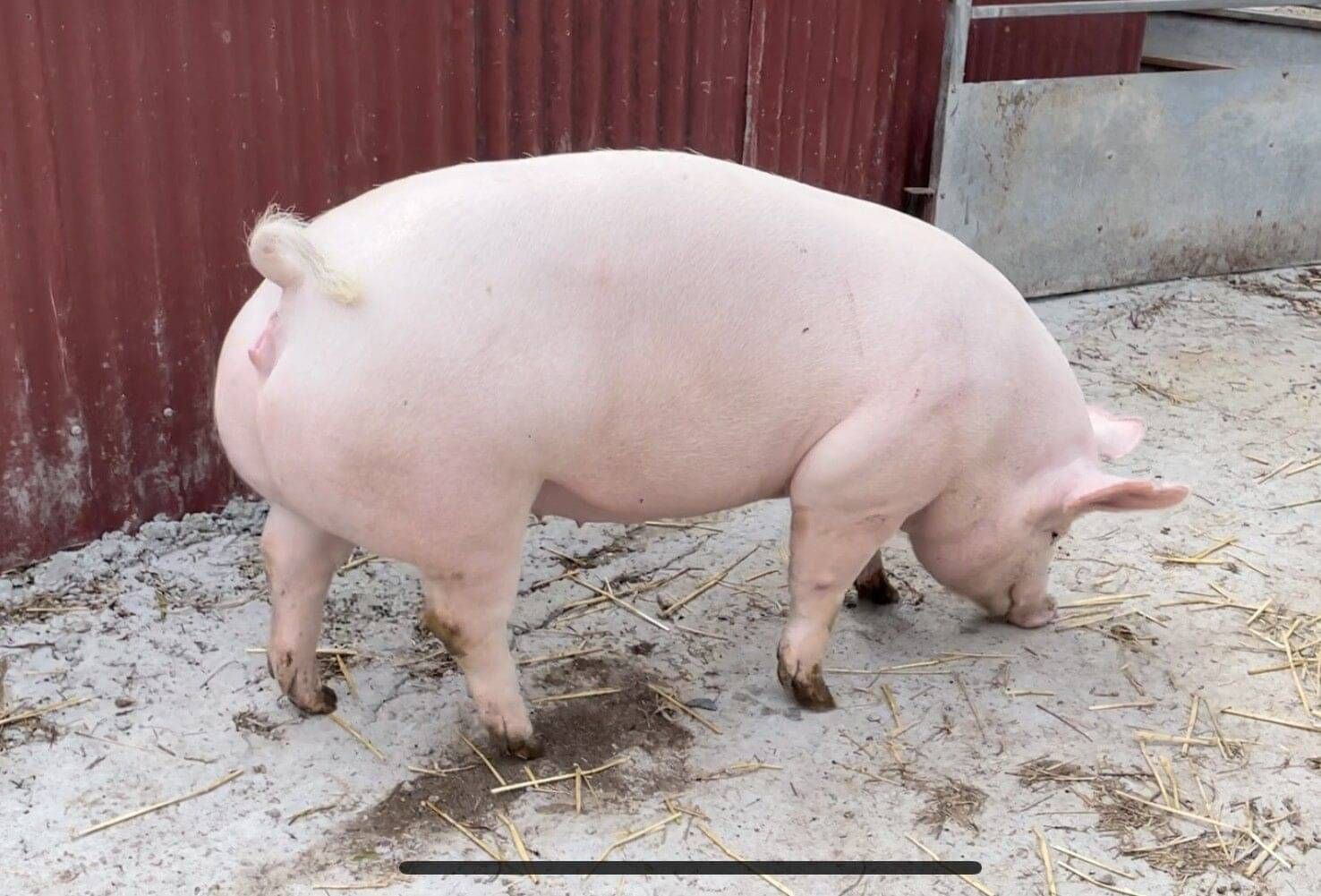
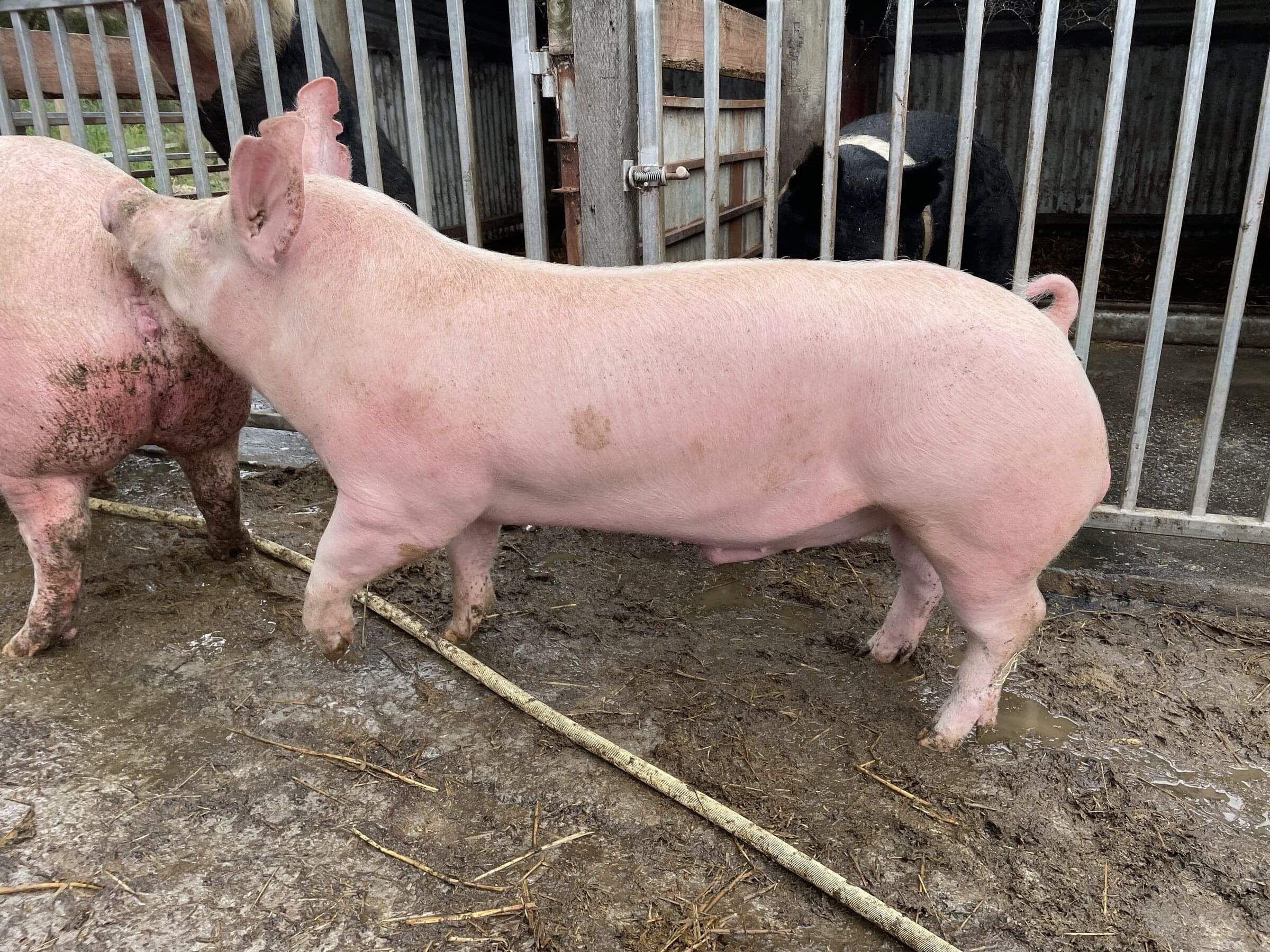
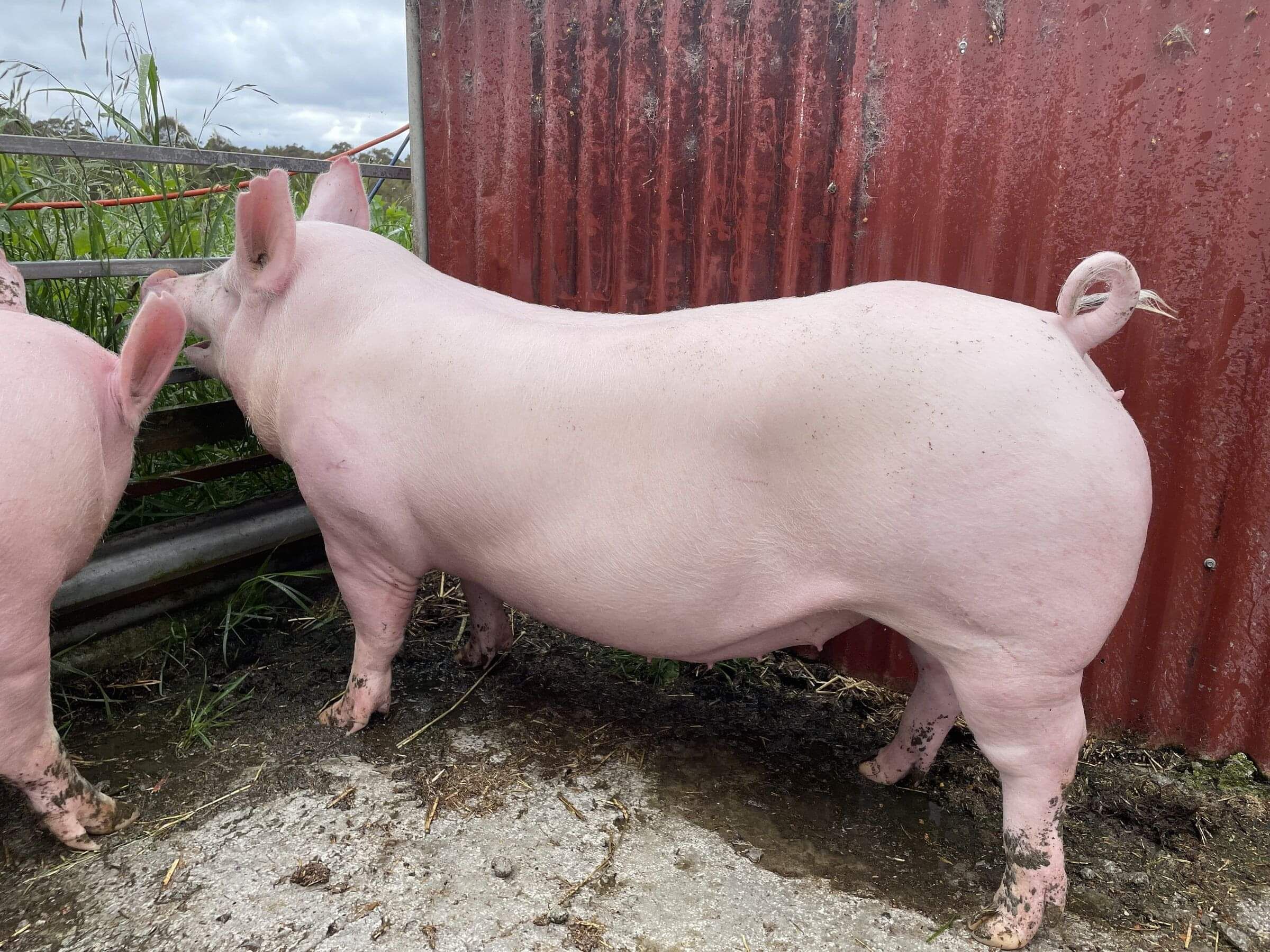
Large White
As of 2022, we will also have purebred Large White boars and Gilts available, as well as F1 gilts (Hampshire/Large white) suitable for both indoor and outdoor production.
Large whites, as the name suggests, are a very large, all white pig. Very popular throughout the world, they originated from the old Yorkshire pigs in the late 1700’s and were originally bred as a hardy, outdoor breed that was widespread throughout the UK. These old style pigs were very similar in appearance and type to Tamworth pigs, except of course for their colour and size.
They were originally brought to Australia in the late 1800’s and have established themselves as the most popular and numerous breed due to their use in industry and reputation as both an exceptional Terminal sire and undisputed mothering breed. They are used extensively in intensive production, where their prolific breeding and large litters are appreciated.
Conformation on modern Large white pigs is focused on meat production, and they are lean, heavily muscled and fast growing with exceptional hams and a large loin muscle. Meat is fine grained, lean and high yielding with very little if any marbling. As such a terminal boar such as a Hampshire or Duroc is generally used to impart greater quality into the meat.
Large White sows are highly regarded for large, vigorous litters, heavy milk production and very good mothering ability. Sows should be feminine and not overly muscled and lean. Boars are heavily muscled and highly fertile, they also have the added bonus of producing all white pigs when used over any coloured sows and will also sire lean, fast growing pigs over any breed with fantastic hybrid vigour and increased carcass yields.
Although they can be suitable as an outdoor breed, generally they will do much better indoors or in a Hybrid indoor/outdoor system. They are not tolerant of strong sun, and not suited well to extremes of heat or cold. Apart from their lack of pigment, this is also partly due to the fact that the vast majority of Large whites have been bred for many decades to suit indoor production:
Large white/Hampshire F1 gilts are becoming a popular choice for both indoor and outdoor production, as they have fantastic mothering ability and high milk production. They are also much more suited to outdoor production as they have some added pigment and toughness from the Hampshire. These sows can then be mated to either a Landrace or Large white boar for pure white pigs or to a Hampshire or Duroc to produce coloured pigs depending upon the intended market.
Fine example of a Hamroc gilt
Pricing
As of 2022 prices (including GST) are as follows;
Purebred Gilts $880
Purebred Boars $1320
F1 Gilts $660
We now deliver, prices depend upon distance and number of stock on board for a particular run. Delivery areas in NSW include but are not limited to the Riverina, central west, ACT, southern tablelands/highlands, north and far north coast and New England areas. Eastern Victoria and southern QLD delivery is also available.
Prices include GST. We do not sell weaner pigs, grower pigs or in-pig (pregnant) gilts. Breeding stock is available from 22 weeks of age; we do not sell breeding stock younger than this. This is to ensure we can make proper selection of breeders both for ourselves and potential buyers, and prices reflect this. Boars are generally around 130kg and gilts 120kg when picked up/delivered
Breeding Stock Enquiries
Please use the form opposite for any questions you may have regarding breeding stock
PLEASE NOTE: WE ARE NOT TAKING ENQUIRIES FOR JOB APPLICATIONS OR VOLUNTEER WORK
All photographs contained on this site are copyright and may not be used without permission elsewhere or reproduced/distributed by any means.
All the information contained within this site are the intellectual property of the author, and are based on our results and findings.
As such individual experiences in practice may vary and we are not responsible for the use/misuse of this information and will not be held liable for any financial loss or investment made as a result.
